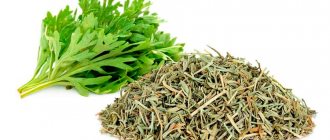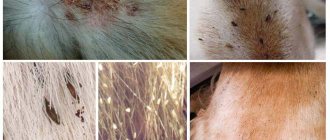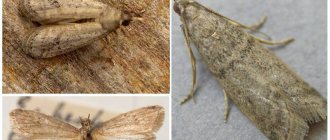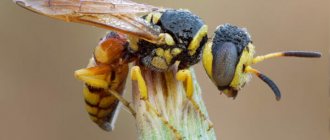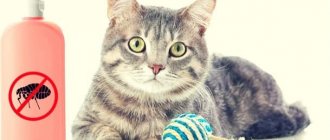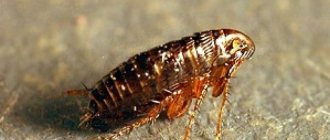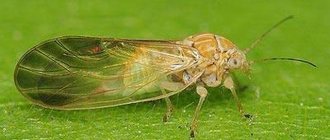Description, appearance and structure of the flea
Fleas are fairly small insects. Their body length, depending on the species, usually ranges from 2 to 5 mm. The largest individuals grow up to 1 cm. They most often parasitize deer and elk.
If you examine a flea under a microscope, you will notice that its body, covered with a durable chitinous shell, is strongly flattened laterally. This body shape was formed during the process of evolution to make it easier for the insect to penetrate the fur or feathers of the host. The surface of the body is strewn with small spines and bristles. This helps insects stay and move on the animal's fur.
Under a microscope
Those who have ever encountered fleas wonder if they have wings. Indeed, insects move so quickly that it seems that they simply evaporate into the air. In fact, fleas do not have wings. But they have three pairs of legs, with the hind legs being much longer. This makes fleas excellent jumpers.
The mouthparts of fleas are piercing-sucking. There are eyes on the head, but the parasites have very poor vision. They navigate thanks to an excellent sense of smell, as well as with the help of a special sensory organ located on the back of the abdomen. It is called pygidium and is capable of capturing the most insignificant vibrations in the air.
All fleas look the same, the only thing that differentiates them is their size and color, for example, a bird flea is not as dark as a human flea. The body color of parasites can vary from yellowish-red to dark brown, almost black.
By what criteria can you distinguish lice from fleas?
The structure of a flea and a louse is practically the same: they are tiny, wingless, parasitic insects. Only the shape and color of the body differs: the first subspecies usually has a reddish-brown and flat body, and the second: dark gray and oval. Only fleas live mainly on animal fur, and lice live in human hair (on the head, pubic area).
Parasitic insects are very agile thanks to 6 strong and long legs. The back pair of flea legs is especially well suited for jumping: the parasites can make a vertical leap up to 18 cm, and in length overcome as much as 33 cm. Because of this fact, people often ask: “how many wings does a flea have?”, because it seems impossible, that a small insect can travel such distances without the ability to fly.
Lice often move like crabs; under a microscope you can even see small claws that allow arthropods to cling to hair. It is because of these claws that parasites are so difficult to comb out. The oral apparatus of fleas and louses has a tubular shape, perfectly adapted for feeding on the blood of people and animals. Not only the habitat is different, but also the food of the parasites. A flea primarily survives on the host's blood, while lice can also feed on dead skin particles.
Indeed, as mentioned above, fleas most often infect dogs and cats, and lice most often infect people.
But few people know that in case of extreme hunger, blood-sucking parasites easily change their “master”. Lice usually affect children of preschool and school age, and fleas - any animal with thick fur.
Infection with blood-sucking parasites is a sign of lack of hygiene procedures or a polluted environment. You can become infected through close personal contact with an animal or someone with lice.
Lice and fleas: differences and similarities in a comparative table.
| Criterion | Fleas | Lice |
| Overkingdom | Eukaryotes | |
| Kingdom | Animals | |
| Type | Arthropods | |
| Class | Insects | |
| Squad | Fleas | Lice and lice |
| Variety of species | Around 2000 | More than 3000 |
| Medical name for parasite infestation | Aphanipterosis | Pediculosis |
| Cycle of life | Although parasites can remain alive throughout the year, this is extremely rare. On average, the flea development cycle takes no more than six weeks. During this time they go through 4 stages. | A louse can live up to 30 days in human hair, and about 2 days without food. Nits (eggs) can live up to 2 weeks (including without food). One louse can lay as many as 100 eggs |
| Symptoms of infection | Itching, skin irritation, blood loss. | Itching on the pubic area or scalp. |
| Where can I pick it up? | Large numbers of larvae and adults are found in animal bedding, dust, warm soil, cracks in floors or walls, carpets, burrows and bird nests. The highest concentration is in the animal's fur. | It is transmitted after close personal contact (especially if you press your head against infected areas), as well as through the exchange of personal items (hats, scarves, combs and hair ties). Less commonly, lice live on towels, clothes, blankets, pillows, and upholstered furniture. |
| When to see a doctor? | If the animal suffers from any severe allergy to the bites, or if the infestation is so extensive that it has caused anemia. | If a pharmacy over-the-counter shampoo does not cope with head lice; if the invasion is accompanied by unbearable itching. |
Varieties
To date, scientists have described more than 2,000 species of fleas, which are grouped into 15 families. Fleas are found in animals, birds, and can live in the upper layers of the earth and on plants. A person can most often come into contact with the following species:
- felines are one of the most common species; they parasitize mainly on cats, but can also live on dogs, rodents, and other animals, and also bite people;
- canine fleas are close relatives of cat fleas, they are also not limited to the dog as a victim, they can settle on cats and other pets;
- human - can parasitize on humans, as well as on animals that often come into contact with them (cats, dogs, horses);
- rats - mainly parasitize rodents (rats, mice), small brown insects are very dangerous, as they carry pathogens of many dangerous infectious diseases;
- domestic - this is not a scientific classification, this is the name given to fleas that live in a person’s home; these include, for example, bed or linen fleas ;
- earthen - live on the ground or in the top layer of soil;
- arboreal - prefer to settle at the foot of trees;
- avian – most often parasitize birds, including domestic chickens;
- herbaceous (field) - live in the grass.
These are just a few species from the huge variety of fleas existing on the planet.
Types of fleas.
Fleas are usually classified according to whose blood they prefer to feed on. In fact, it may be the same flea, which subsequently has many names. Therefore, there is a lot of confusion about this on the Internet and in life.
Cat fleas. These parasites can most often be found on our or street cats (see photo). But if there are no sailors nearby, then the bloodsuckers can attack a dog or a person without any complaints.
Dog fleas. They also prefer to feed on dogs (see photo), but they will not refuse other warm-blooded animals. Due to the presence of bristles and tenacious legs on the body, they feel great on the fur of our smaller brothers; it is not so easy to throw them off.
Sandy, penetrating flea (Tunga penetrans). It lives mainly in southern countries and parasitizes the skin of humans or animals. They carry a dangerous tropical disease called sarcopsillosis, which can lead to death.
Human. It is clear from the name that our blood is most preferable to them, but do not forget that all fleas are omnivores, so they can be found on cats, dogs, rats, etc. Sometimes they are called bed, household, linen, room and earthen.
Chicken. They appear in large quantities in chicken coops. The difference from other bloodsuckers is their size - they are larger, especially the males. Also, not only chickens, but also other birds suffer from them.
Rat. It was from these bloodsuckers that the largest part of humanity died. In the Middle Ages they were carriers of the plague. But even in our time we should not neglect them.
Rat flea under a microscope
They usually feed on the blood of rats, but just like other types of fleas, they can easily choose anyone as their victim. Today, these parasites are carriers of a wide variety of terrible diseases. They bite painfully, because they do not have pain-relieving saliva, so bites are detected immediately.
Lifestyle and behavioral characteristics
Most often, fleas parasitize animals that have a permanent shelter. Those who use a nest, burrow or other shelter occasionally from time to time are less likely to be attacked by bloodsuckers. Usually the flea does not live permanently on the victim's body. She jumps on it to feed and then returns to the litter of the nest or burrow.
Infected animals
There are so-called “stationary” ectoparasites. They parasitize animals that have no shelter. In order not to lose the owner, such fleas do not leave his body. Most often this applies to fleas of marsupials and artiodactyl mammals. Another reason for permanent residence on the victim’s body is the need for regular nutrition.
The vast majority of fleas are not too picky in choosing a victim and can parasitize various animals. The exception is fleas of bats, which recognize only this species of animal as a host.
Features of character and lifestyle
Some fleas (such as rabbit fleas) are very host specific, while other species parasitize a variety of mammals. The cat flea infects not only the domestic cat, but also dogs, foxes, mongooses, possums, leopards and other mammals, including humans, if its normal hosts are not available.
Related mammals tend to parasitize fleas, which are themselves related. Thus, peak rabbits (Ochotona) living in the rocky mountains are infested with two distinctive genera of fleas that are also found on peaks in the mountains of Asia, indicating a close phylogenetic relationship between these geographically separated hosts. Bird fleas have relatively recently adapted to their hosts. They share several similarities, one of the most obvious of which is the increase in the number of ridges on the upper surface of the thorax, which serve to anchor them within the feathers.
Interesting fact: Monkeys do not eat fleas, nor do horses and most ungulates. The most parasitic group of mammals are rodents. Their habit of building nests in burrows promotes the development of flea larvae. Animals without permanent residence tend to carry fewer fleas.
Although both flea sexes feed voraciously and repeatedly on blood, they survive for varying periods of time, regardless of the host. For example, a rabbit flea can survive nine months at temperatures near freezing without feeding.
Methods of movement and jumping characteristics
Fleas move in several ways. They:
- jumping;
- crawl;
- running.
Parasites cannot fly due to the lack of wings.
Jumping is the main movement option for fleas. Jumping fleas move so quickly that it is almost impossible to follow them. It seems that the insect has simply disappeared. This is understandable, because at the moment of jumping the flea reaches a speed of up to 2 m/s.
The length of a flea's jump reaches 50 cm. This distance exceeds the length of the insect's body by 120 - 150 times. The flea jumps not only far, but also high – it can cover a distance of 30 cm.
Scientists are still studying how the flea jumps. Research shows that at the moment of jumping, the insect's body contracts like a spring. Then the long muscular hind legs are used, with which the flea pushes off the surface and abruptly begins to move in the desired direction.
An interesting fact is that a hungry flea can jump non-stop for several days in search of a victim.
Natural enemies of fleas
Photo: What a flea looks like
The enemies of fleas are people who try in every possible way to get rid of them. When controlling fleas, it is best to treat both the host's nest, or area of litter that is the breeding ground for fleas, and the infested host at the same time, since the larval and pupal stages usually develop away from the host's body.
For infested animals, a commercial dust, spray, or aerosol containing an insecticide or growth regulator is used. However, in some regions, fleas have become resistant to some insecticides and new materials are required. To control larval and adult fleas away from the host, insecticides or growth regulators can be applied to the pens and shelters of affected animals. Repellents can be effective in preventing flea attacks.
The flea life cycle is interrupted when the temperature drops below 21 degrees Celsius or there is an excessive drop in humidity. Thus, thoroughly cold washing bedding or leaving items outside during freezing temperatures can help control potential flea infestations while other measures are in place.
Preventative measures can help avoid rashes and irritation for pets. It's easier to prevent fleas than to get rid of an infestation. It can take up to 6 months to completely remove fleas, as different stages of the flea life cycle can persist in various hidden areas of the home and pets, avoiding reaching a vacuum or other physical and chemical measures to kill them.
Reproduction and life cycle
To successfully reproduce, fleas need food and favorable environmental conditions. Sexual intercourse occurs when the female climbs onto the male's back. She draws his genital claw into the spermatheca and receives the seed. The fertilization process lasts about 15 minutes, but sexual intercourse can last several hours.
Soon after fertilization, the female lays eggs. She does this in small clutches of 10–15 eggs. The flea forcefully pushes out the eggs, which scatter in different directions. Thus, competition between hatched larvae is reduced and they have a greater chance of survival.
Reproduction
The flea development cycle includes 4 stages:
- egg – develops in 5–14 days depending on temperature and humidity;
- larva - a translucent worm emerges from the egg, experiences three molts, during each of which it increases in size;
- pupa - the flea larva hides in a cocoon, where its further development occurs from 2 weeks to a year (at this time the insect does not need nutrition and is resistant to external conditions and mechanical influences);
- imago (adult) - having hatched, it immediately begins searching for prey.
Reproduction
How do fleas reproduce? This process is not much different from other blood-sucking parasites. The female is ready for fertilization immediately after emerging from the cocoon. One meeting with a male is enough for her to lay eggs for the rest of her life. However, for them to mature, she needs fresh blood. Therefore, immediately after copulation, she looks for a victim and will not rest until she finds it.
Fleas do not have clutches as such. They simply scatter their eggs in different directions, forcefully pushing them out of the abdominal cavity. Smooth and dry, they fall off the surface of the animal’s body and fall onto the substrate in which the larva will further develop.
The female flea lays 25-50 eggs per day. Considering that her average lifespan is from 4 weeks to 2 months, it turns out that during this period she will leave more than 1000 descendants! Such high fertility ensured that these parasites became widespread throughout the world.
Where do they live?
Fleas are hardy and virtually invulnerable insects that adapt well to various environmental conditions. This partly explains the fact that fleas' habitat includes all continents. The habitats of most species of parasites are temperate and subtropical zones, but fleas live even in Antarctica, parasitizing local inhabitants - penguins and seals.
Some species do not leave the host's body, others live in nests and burrows, and others settle in the ground or on grass. Fleas often live next to people, living in basements and even apartments. In most cases, at home they parasitize pets, but sometimes they also attack people. In rare cases, fleas can even settle on a person’s head, hiding in the hair.
How to get rid of fleas in an apartment
How to get rid of fleas in the house quickly? This question worries all those who suffered this fate. There are many methods and means, but not all are effective and efficient. It is important to remember that the likelihood that you will get rid of the parasite in one go is low. It is possible that the following means and methods will have to be used at certain intervals, combining them.
The best solution would be to seek help from professionals who will eradicate the insects in just a couple of hours.
Traditional methods
The most traditional method would be to carry out general cleaning of the house and treat it with insecticides. Two main conditions: wipe off all dust, including hard-to-reach dust, and wash the floor with ammonia; its smell is quite specific to the insect.
To get rid of parasites yourself, you will have to carry out cleaning in several stages.
A variety of sprays, which can be purchased at any hardware store, will also help remove fleas from the apartment, but they must be used carefully, in accordance with the requirements stated on the package.
Modern professional products used by insect control specialists no longer smell so unpleasant and are practically safe for people and animals.
Combining these two methods can get a good result:
- remove animals from the apartment;
- cover or hide food and utensils tightly;
- wash all textiles at high temperatures and hide them, and if they are very dirty, it is better to throw away animal bedding;
- move furniture away from the walls;
- close all windows;
- think about PPE (personal protective equipment), this will be needed when using chemical sprays;
- carry out thorough cleaning;
- treat the room with insecticides.
It is enough to treat all surfaces and leave for several hours.
Traditional methods and remedies
To get rid of fleas, traditional methods are also used, because this problem has always existed, and the appearance of insecticides on the market is a relatively recent event.
You don’t have to leave your apartment for several days if you need to get rid of fleas at home.
How did people get rid of fleas in apartments and premises on their own?
The simplest and most effortless way to kill pests is temperature exposure. In winter, the room must be ventilated for 24 hours, and in summer, all textiles and upholstered furniture must be exposed to the scorching sun for two days.
Before using chemicals yourself, you need to carry out a general wet cleaning and wash all things.
The following methods may also be effective:
- dilute salt and water in a glass of water and spray it on furniture, such a solution will corrode the flea’s body, but will not harm either an adult or a child;
- mix garlic and brewer's yeast, spread the prepared gruel around the house, the downside is that the smell is unpleasant for humans;
- pine sawdust - they need to be placed on animal bedding and changed periodically;
- citruses have a pleasant aroma for people, but insects do not like them at all, use essential oils;
- washing floors with bleach or vinegar, do not forget about gloves, otherwise there is a risk of skin damage;
- the smell of blue wormwood is also specific to the insect and will repel it.
What do they eat?
The answer to the question of what a flea eats will depend on whether we are talking about an adult insect or a larva. Parasite larvae consume decaying organic compounds as food. Their diet includes flea excrement, particles of dead plants, even dust.
The diet of adult fleas is not so varied. Their only food is fresh blood; without it they cannot develop and reproduce. Absolutely all fleas are blood-sucking, regardless of their species.
Unlike some other blood-sucking insects, both female and male fleas feed on blood. The parasite sucks blood once every 2-3 days, and males become saturated faster than females. Eating can last from a few minutes to 2-3 hours. Very often, fleas suck out much more blood than they can digest. While eating, their abdomen swells and the insect increases in size.
Flea bite
Parasite behavior
Appearance of a flea
Not everyone knows what fleas look like. People who do not have animals in their homes usually have very general ideas about these insects. A person may not know whether fleas have wings. He, unlike a zoologist, is not interested in the question of the number of legs a flea has. But this does not mean that he will never encounter this phenomenon in his life. Parasites can be accidentally brought home from stray dogs and cats from the street. Infection is possible while relaxing in the forest or on the beach.
Fleas are found in all seasons of the year. Both males and females feed on blood. They live in the nests of birds, squirrels, in the burrows of gophers, hamsters, jerboas and other small animals, and are distributed throughout the world. The main hosts are mammals. Representatives of fleas have been found even in Antarctica. But against the general background, the colony of insects that bite humans is not so numerous.
The feeding process can last from one minute, if the parasite is disturbed, to several hours. Some species require multiple meals, others are rarely saturated, but in excess, without even having time to digest the incoming blood. There are insects that leave the owner after their meal, but there are also those that remain in the animal’s fur until the next attack of hunger.
How long do they live?
The type of flea, environment and living conditions significantly affect life expectancy. Fleas can live from 2-3 months to 2 years. Dry air and heat shorten the insect's lifespan. So, at air temperatures above +30⁰С, the life cycle is reduced by almost half - the insect simply dries up. At lower temperatures, the development of the parasite occurs more slowly, which means it lives longer.
The absence of a host, oddly enough, also does not shorten the life of fleas. They can go without food for a long time (several months), they simply become less active and stop reproducing. Under normal conditions (optimal temperature, humidity and sufficient food), fleas most often live about 2-2.5 months.
Stages of life
Blood-sucking parasites are very prolific. It is enough for a female to meet a male once, and she can lay up to one thousand eggs. And this is when you consider that the average life expectancy is from one to two months. Fleas are insects with a full cycle of transformation. Their life cycle includes the following stages:
- egg;
- nymph or larva;
- chrysalis;
- imago or adult insect.
Each of these stages is characterized by its own conditions of development, time periods, features of life activity and body structure.
Flea eggs are white and very small in size - up to 0.5 mm in length. In order to lay eggs after meeting a male, the female must profit. So she immediately goes in search of fresh blood.
Fleas do not particularly care for their offspring and they do not lay eggs as such. They just scatter eggs anywhere. And then everything depends on the temperature in the environment in which they find themselves. The higher it is, the faster the larva will emerge from the egg. On average, this period lasts up to 10 days.
Flea larvae are completely different from adult fleas. They are hairy worms that are dark or whitish in color. Their length is up to 5 mm. At one end of the nymph's body is a large head with fairly developed and strong jaws. Nymphs have absolutely no legs, to the eye. Unlike adults, they do not feed on blood. Their food source is flea excrement, plant sap, and decomposing animal food debris.
The life cycle of the nymph lasts up to 4 weeks. In warm conditions, the larvae develop in only 10 days. During this time, the nymph pupates, forming a cocoon around itself.
In it, the pupa can survive the entire winter, and if temperature conditions allow, it will be born within five days.
FLEA
FLEA
(
Siphonaptera, Aphaniptera, Suctoria
) - a detachment of wingless parasitic blood-sucking insects, all species of which in the imaginal phase are parasites of warm-blooded animals.
On the territory of the USSR lives approx. 500 species and subspecies belonging to more than 50 genera. In total, approx. 2000 species of fleas. Rice.
1. Dog flea: 1 - abdominal spiracles; 2 — ctenidium of the anterior chest; 3 - antennae; 4 - eye; 5 - head ctenidium; 6 - palp; 7 - spiracles of the chest. Body length from 0.75 to 5 mm; when eggs mature in females of some species, it reaches 16 mm. The color of fleas ranges from straw-yellow to black. The body is flattened laterally, consists of a head, three thorax segments with three pairs of legs and 10 abdominal segments (according to Yu. N. Wagner, there are 12 of them), covered with numerous bristles, spines, teeth, etc. (Fig. 1). The head is divided by the antennal fossa into anterior and posterior parts. In front of the fossa there is a pair of eyes; in some types of fleas they are underdeveloped or absent. All details of the external structure are important for the taxonomy of Fleas. The mouthparts are piercing-sucking type. The hind pair of legs is highly developed (jumping).
Rice. 2. Development of a flea: 1 - egg; 2 - pupa; 3 - cocoon.
Fleas are insects with complete metamorphosis. The development of fleas (Fig. 2) consists of 4 main phases: egg - larva - pupa - adult flea (imago). The female lays eggs in batches (the human flea Pulex irritans can lay more than 400 eggs in its lifetime). They develop in dry debris (floor cracks, animal holes, etc.). The timing of the development of various phases varies and depends on the ambient temperature, humidity, nutrition, etc. The most favorable conditions for the development of a human flea are a temperature from 18 to 27 ° and a relative humidity of 70-100%; a decrease in humidity is poorly tolerated. B. some species are able to tolerate temperatures below zero. Flea eggs are usually milky white in color, 0.5 to 1 mm in length. The larva is worm-shaped, lacking eyes and legs; the body, covered with hairs, consists of a head with gnawing mouthparts, a chest and abdomen; feeds on organic substances of animal and plant origin. After one or two molts, the larva spins a cocoon and turns into a pupa. B. Many wild animals attack humans to suck blood. The adult sucks blood from several minutes to three or more hours. They can live for a long time (more than a year) without food. Thus, P. irritans lived in the laboratory for 512 days, and Neopsylla setosa - 1725 days. B. are able to move along the passages of burrows and on the surface of the earth; They move by crawling and jumping, and the longest jump in the human flea P. irritans reaches 32 cm.
Fleas are divided into stationary intradermal and cutaneous parasites (females of the genera Tunga, Echidnophaga and some others), semi-stationary (females of the genera Vermipsylla, Dorcadia, etc.) and temporary (most species) ectoparasites. There are certain species, or groups, of animals that are the main (specific) hosts of B. It is observed that certain types of fleas are attached to certain landscapes and are seasonal, that is, they are more or less abundant in one season or another.
When B. bites, saliva enters the wound, causing various allergic reactions. In tropical countries of both hemispheres, humans are attacked by females of B. Tunga penetrans, which are almost entirely embedded in the skin (usually between the toes) and remain there until the end of their lives; increasing in size to a pea, they cause severe suffering to humans.
B. are active bloodsuckers, parasitize many animals, and are carriers of pathogens of many infectious diseases of humans and animals (plague, tularemia, myxomatosis, endemic flea typhus, etc.).
Rice. 3. A flea, the stomach (2) of which is clogged with plague bacteria: 1 - stomach; 3 - sucking muscle.
B.—carriers of the plague pathogen (see). B. of marmots (Oropsylla silantiewi), ground squirrels (Ceratophyllus tesquorum, Neopsylla setosa), and rats (Xenopsylla cheopis, Ceratophyllus fasciatus) are of epidemiological importance. Infection with B. plague occurs through blood sucking on sick animals with intense bacteremia. Plague bacteria multiply in the flea's body, complete part of the life cycle and, when multiplying, clog the flea's proventriculus (Fig. 3), creating an obstruction in it. During the process of blood sucking, the ingested blood hits the bacterial plug and returns back to the wound, bringing bacteria with it. The causative agents of plague can persist in the body of a flea for more than a year. Plague microbes are also released in the feces of infected fleas and can be rubbed into skin damaged by scratching.
B. rats (Xenopsylla cheopis) are specific carriers of endemic flea typhus (see Endemic flea typhus). They easily become infected by it when feeding on infected rats, retaining rickettsiae in their bodies for life and excreting them in their feces. A person becomes infected when feces of infected fleas come into contact with the conjunctiva of the eye, in the respiratory tract, or in scratches on the skin.
In the Tien Shan mountains and Mongolia, the fleas Vermipsylla alacurt, Dorcadia ioffi and D. dorcadia greatly harm domestic animals, especially sheep, causing them to lose hair and become exhausted, which often leads to the death of young animals. B. serve as intermediate hosts of the helminths pumpkin tapeworm (Dipylidium caninum) and rat tapeworm (Hymenolepis diminuta), which humans can become infected with from fleas.
To combat fleas, mechanical and physical methods are used. and chem. methods (see Pest control). It is recommended to regularly sweep the floors and wash them with salty soapy water, cresol and carbolic solutions (see Disinfectants), sealing cracks in the floor; Debris should not accumulate in the corners. Particular attention should be paid to pets - change bedding more often, remove garbage, wash animals with cresol emulsion, etc. To repel fleas, underwear and bedding can be moistened with drops of strong carbolic acid, dimethyl phthalate, etc.
See also Insects, Parasites, Vectors.
Bibliography:
Bibikova V. A. Fleas (Aphaniptera) and Pasteurella pestis, in the book: Biol, relationships between blood-sucking arthropods and disease pathogens. man, ed. P. A. Petrishcheva, p. 178, M., 1967; Vysotskaya S. O. and Kiryanova A. N. Methods for collecting and studying fleas and their larvae, K., 1970; Darskaya N. F. Fleas (Suctoria), in the book: Methods for studying natural sciences. foci of pain man, ed. P. A. Petrishcheva and N. G. Olsufiev, p. 54, M., 1964; Ioff I. G. Alakurt, in the book: Ectoparasites, ed. V. N. Beklemishev and I. G. Ioff, c. 2, p. 4, M., 1950, bibliogr.; Ioff I. G. and Skaloy O. I. Key to fleas of Eastern Siberia, the Far East and adjacent areas, M., 1954, bibliogr.; Ioff I. G. and Tiflov V. E. Key to Aphaniptera (Suctoria - Aphaniptera) of the South-East of the USSR, Stavropol, 1954, bibliogr.; Ioff I.G., Mikulin M.A. and Skalon O.I. Key to fleas of Central Asia and Kazakhstan, M., 1965, bibliogr.; Skaloy O.I. 31. Order Siphonaptera (Aphaniptera, Suctoria) - Fleas, in the book: Key to insects of the European part of the USSR, ed. G. Ya. Bey-Bienko, vol. 5, part 2, p. 799, JI., 1970; Tiflov V. E. The importance of fleas in the spread of diseases, Proceedings of Scientific Research. anti-plague Institute of the Caucasus and Transcaucasia, in. 4, p. 15, Stavropol, 1960, bibliogr.; Hopkins GHE a. Rothschild M. An illustrated catalog of the Rothschild collection of fleas (Siphonaptera) in the British museum (Natural history), v. 1 - 5, L., 1953 - 1971.
V. E. Tiflov.
The most common types of fleas
Fleas are classified according to host type into:
- human (pulex irritans);
- felids (ctenocephalides felis);
- canids (ctenocephalides canis);
- rat (Xenopsylla cheopis).
This does not mean that parasites have a species preference. Human fleas bite not only domestic animals, but also wild ones with equal pleasure. Only blood-sucking insects that parasitize bats remain faithful to their owners. They are represented by a separate and relatively small group of Ischnopsyllidae (chiropteran fleas).
Types of fleas
Only rare types of fleas are constantly found on the victim's body. The rest live in the bedding of burrows and bird nests, jumping on the owner only to eat. What types of fleas are there according to their habitat? They are divided into:
- sandy;
- earthen;
- bedding or linen.
This division is conditional because the variety of fleas in the house includes all of the listed species. Ground insects enter a person’s home from basements; sand insects are brought after walks in a coniferous forest, or from the beach. They settle in floor cracks, carpets, and behind baseboards. Linen creatures love to live in the folds of bedding and clothing. The name reflects the location of the parasites indoors or in nature. But often the type of sand “vampires” is no different from those that are used to biting a cat or dog.
Interesting!
The folds of chic dresses and high hairstyles of ladies and gentlemen of the Victorian era were swarming with blood-sucking insects. To catch them, they came up with special devices - flea traps, elegant openwork boxes inside of which the bait was placed. Wool or fabric was moistened with honey, resin and a drop of blood was dropped. Insects crawling inside became glued to the filler.
Fleas
Because bloodsuckers easily change hosts, bubonic plague, carried by rat fleas, killed more than 20% of Londoners in the 17th century. About 55 species of bloodsuckers are carriers of the plague bacillus. The plague pandemic was first described in documents dating back to 540. Then in Constantinople, the “Black Death” killed 5-10 thousand people every day. The Bible also talks about the plague epidemic.
Description of the flea
The photograph shows a characteristic feature of the insect’s body structure. Its hind legs are longer than its body. These powerful limbs help the pest jump high, hiding from pursuit, or jump on its victim.
The flea's reduced wings also help it jump, ensuring synchronized repulsion from the surface. The flea has three pairs of legs, like all insects. The middle legs help with jumping and forward movement.
A flea under a microscope is striking in its variety of patterns on the thighs of its hind legs. Cutiloglyphics makes it possible to differentiate the types of blood-sucking insects. The special structure of the flea's legs allows it to be folded like an accordion in a calm state, without interfering with feeding.
